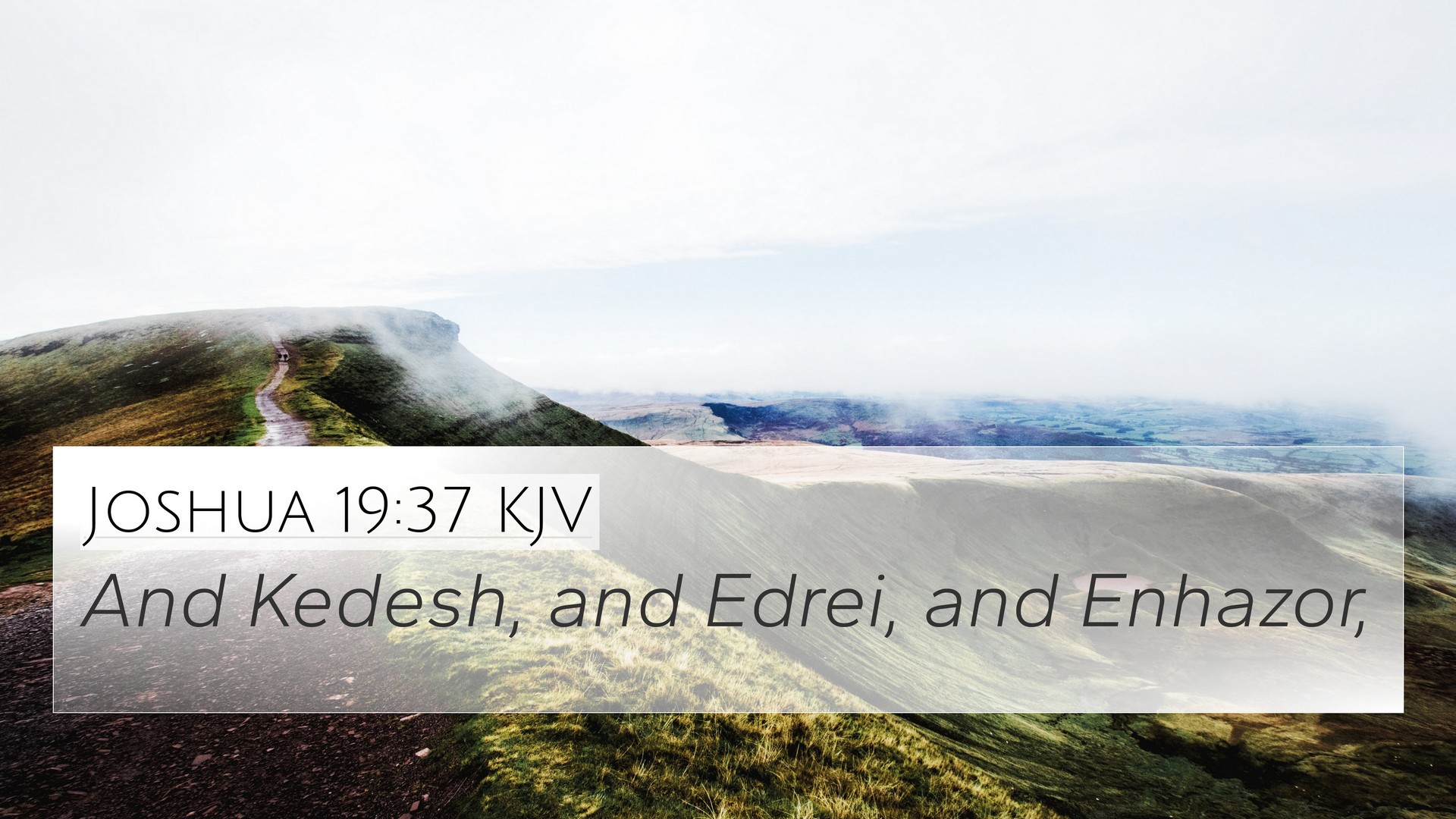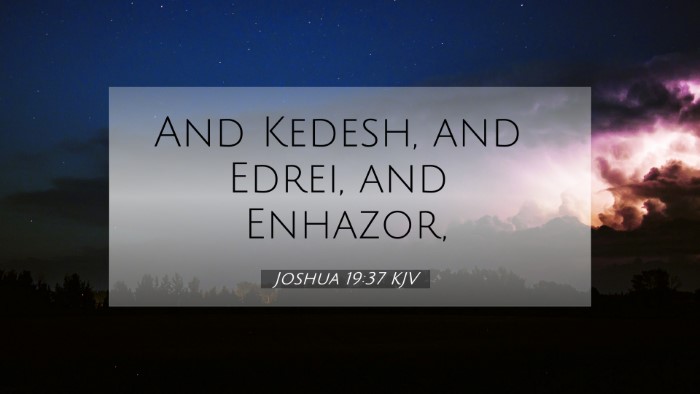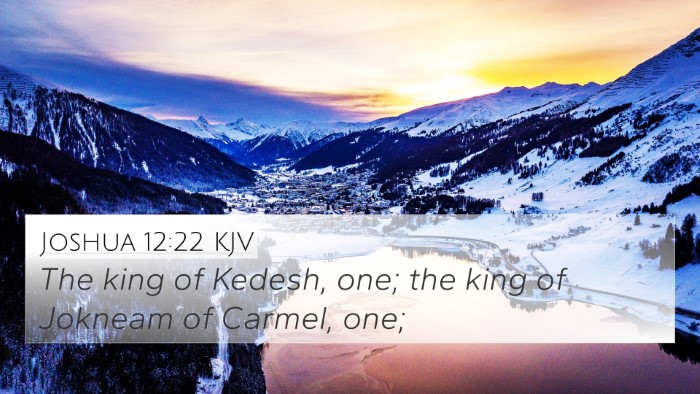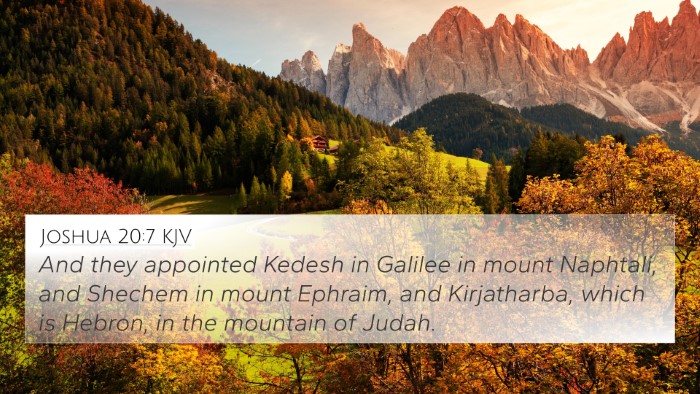Understanding Joshua 19:37
Verse (Joshua 19:37): "And the rest of the chapter is from the eastern side of the Jordan, which is to the south of the region of Naphtali, so that the sons of Zebulun had a more fruitful portion." (Interpretation based on context)
Overview of Joshua 19:37
This verse discusses the allotment of land among the tribes of Israel, specifically focusing on the sons of Zebulun. This passage is significant as it provides insight into the distribution of territory in the Promised Land.
Commentary Insights
Matthew Henry's Commentary
Matthew Henry emphasizes the importance of the land allocation, noting that it was ordained by God and reflects both His justice and mercy. He suggests that this allocation serves as a divine organization of the tribes, which illustrates God's care for His people.
Albert Barnes' Commentary
Albert Barnes points out that the geographical position of Zebulun was strategically important, as it served as a gateway for trade and interaction with other nations. He also notes how this tribe's land would bear much fruit, symbolizing their future prosperity and blessings from God.
Adam Clarke's Commentary
Adam Clarke focuses on the symbolic meaning of the land allotted to Zebulun, interpreting it as a representation of spiritual sustenance. He highlights how the physical land represents the spiritual inheritance that every believer can attain through faithfulness and obedience to God.
Bible Cross-References
The following verses are related to Joshua 19:37, illustrating connections between various biblical texts:
- Genesis 49:13: Jacob's blessing of Zebulun speaks of their involvement in maritime trade and settling by the sea.
- Deuteronomy 33:18-19: Discusses the blessings on Zebulun and Issachar, emphasizing their roles in Israel's prosperity.
- Judges 4:6: References the significant role of Zebulun in the military efforts during the time of Deborah.
- Matthew 4:13-16: Shows the fulfillment of Isaiah's prophecy regarding Zebulun and Naphtali, linking it to Jesus' ministry.
- 1 Chronicles 12:33: Lists the warriors of Zebulun who supported David, highlighting their valor and strength.
- Isaiah 9:1: Prophetic indication of the future glory of the land associated with Zebulun as a place receiving light.
- Luke 2:36: Anna, a prophetess from the tribe of Asher, reflects the role of the tribes, including Zebulun, in waiting for redemption.
- Revelation 7:8: Mentions the tribe of Zebulun in the context of the sealing of the tribes, showing their importance in God's plan.
Thematic Connections
The thematic connections outlined in this verse resonate throughout the Scriptures, emphasizing:
- Divine Inheritance: The land represented more than physical territory; it symbolizes the spiritual inheritance all believers have in Christ.
- Community and Cooperation: The tribes of Israel, including Zebulun, illustrate the necessity of working together to fulfill God’s purposes.
- God's Providence: The allocation of land underscores God's sovereign control and provision for His people in all circumstances.
- Spiritual Fulfillment: The physical territory given to Zebulun reflects the spiritual abundance that comes from following God's direction.
Concluding Thoughts
In summary, Joshua 19:37 emphasizes the divine allocation of land to the descendants of Zebulun, suggesting both literal and spiritual interpretations. The insights from public domain commentaries reveal the layered meanings within this passage, encouraging believers to explore the interconnectedness of scriptural narratives.
Using Cross-References for Deeper Understanding
Engaging in cross-referencing biblical texts is a valuable tool for deeper biblical study. By examining connections between verses, you can uncover a richer understanding of God's Word and how various themes interweave throughout the Scripture. Consider utilizing tools like a Bible concordance, Bible cross-reference guide, and Bible reference resources to enhance your study. Exploring cross-referencing Bible study methods can also enable a thorough examination of similar themes across different texts.




